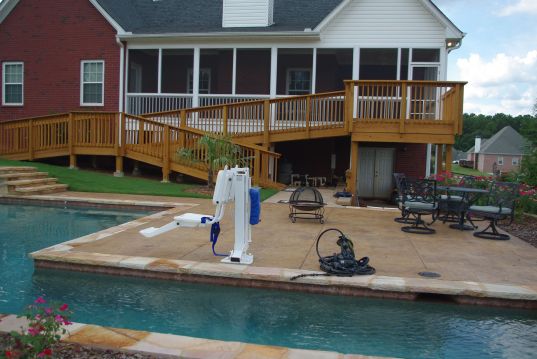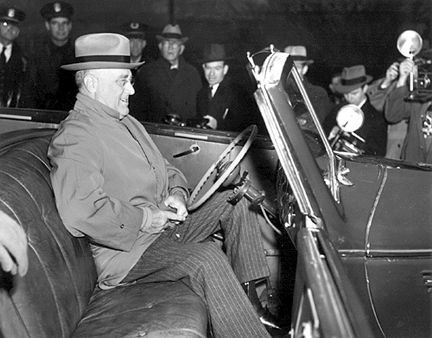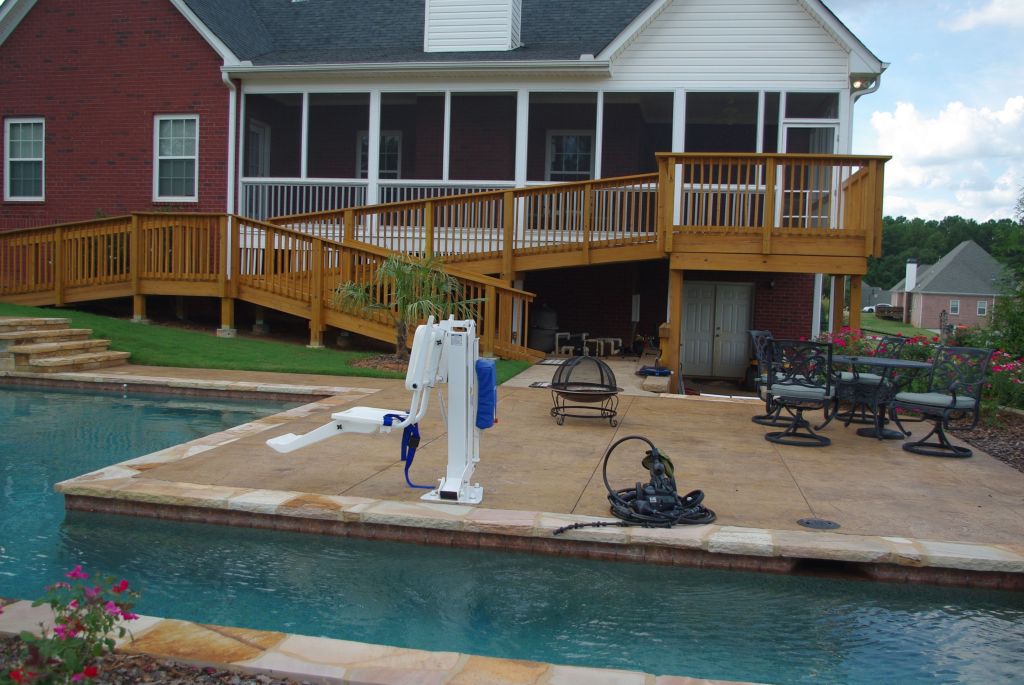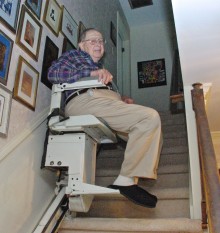
Though aging was beginning to affect his normal activities, retired Col. Irv Schoenberg declared, “I’m not moving again.”
And that was that.
Between his career in the Air Force and his subsequent career in private business, Schoenberg had lived in nine states, as well as in Asia and Europe. Now, at his home in Dunwoody, he had come to treasure the feeling of being in familiar surroundings.
“I just prefer to stay in my own home,” Schoenberg said, “for as long as I can.”
He and his wife, Ann, had talked about getting a smaller place eight years ago. With health-related issues to consider, they realized that any such move would be more difficult the longer they waited.
Instead, they decided to stay, but to make some major changes. After consulting an architect, they added a master bedroom to the main floor of the house.
But even after that work, there was still an everyday challenge for Schoenberg — getting to his upstairs office. His years of research resided in labeled files in the second-floor office. And for him, the stairs were no longer manageable.
For the retired military man, who is 88, giving up on using the office was out of the question. It was part of maintaining his independence and normal life. So the couple installed lift chairs, a powered chair attached to the staircase that lets him ride up to the second-floor landing.
These devices, once associated with the ultra-rich and seen mostly in Hollywood movies, are now affordable and increasingly common in American homes.
“The main thing, was I didn’t want to fall again,” said Schoenberg, who had taken a bad tumble on his basement steps.
Among older adults, falls remain the leading cause of both fatal and nonfatal injuries. Recent data show the direct medical costs of falls are substantial. According to the CDC, the estimated cost in 2010 was $30 billion.
Modifying instead of moving
Since the recession of 2008, one of the fastest-growing segments of the residential remodeling industry involves senior home-dwellers. They prefer to stay in the home they’re used to, but need help to remain there.
One of several resources to look for when making home modification plans is CAPS, a Certified Aging-in-Place Specialist program.
A person with CAPS certification has specialized training in the area of helping people make changes in their current environment.
Rick Thaxton, a CAPS specialist with HomeFree Home Modification, worked in the home care provider area for a few years, and has given a lot of thought to home modifications.
“There’s everything out there when people start to look,” he said. It runs the gamut from “A Place for Mom” to a “Granny Pad.” “It’s a matter of what works best for each family.”
“Home is their designated comfort zone,” said Thaxton. And there’s a rewarding feeling when you can help clients meet their basic needs.
It might be as simple as taking out a bathtub and replacing it with a roll-in shower, said Thaxton. Or possibly widening a door to allow for a wheelchair, he added. Or it might include looking to the latest technology.
Improvements in technology have also been a boon to people who want to stay in their homes.
“I think a lot of the technology is most mature in the area of home monitoring and security: locks, alarms, motion detectors,” said John Morris, a research scientist with the Wireless Rehabilitation Engineering Research Center at Atlanta’s Shepherd Center.
“Of course, these can be of use to people with disabilities, elderly individuals and others.”
Morris explained that camera systems can let vulnerable residents know who is outside the door. Motion detectors tell a family member that their elderly or vulnerable loved one is moving about the house (and therefore, presumably OK).
“Beyond the ‘accessible home,’ there may be new solutions for the ‘assistive home’ that helps the resident do things,” he said.
Morris said there are many ideas for computer-based systems that cue or remind senior residents and people with brain injuries to carry out various activities of daily living (such as personal grooming, taking medication or preparing meals).
Dealing with disability
You don’t have to be over 65 to want to age in place.
Loganville resident Craig Hamrick, who is in his early 40s, found that out after a spine injury. It made being home alone somewhat risky if an unexpected problem occurred.
“He was at Shepherd Center with an injury that left him mostly paralyzed,” said Paula Hamrick, his wife.
“We moved into our dream home about two years before the accident happened,” she explained. “We knew we wanted to stay here, but we needed to learn how to make that happen.”
The Hamricks say that, in many ways, they were lucky. Their original builder was a believer in “aging in place.” All doors accommodated Hamrick’s wheelchair. Only the shower door had to be removed and the entry to the shower stall widened. They replaced the shower stall threshold step with a low ramp.
Then they looked for ways to get Hamrick in and out of the house. A motorized elevator platform in the garage filled the bill. The platform allowed for a wheelchair to ride up on the platform and then reach the kitchen floor level from the garage, eliminating the need for steps. It led to an outside door, and the hinges were changed to allow it to swing outward.
“At the time, that was the only way out of the house,” Paula said. She was worried about a potential fire in the kitchen or laundry room, and she knew they had to come up with a new idea for a second exit.
What worked for them was an add-on porch with a door and a dual ramp from the basic living area to the backyard and pool deck.
“Knowing he had two ways to leave the house allowed me to be able to go to work,” she explained. At that time, her employer was more than an hour away, and if her husband had an emergency, she was not close enough to help. Today she is able to work from their home.
The last thing on their list was driving. Cars can be ordered to accommodate many types of disabilities. The Hamricks received their new modified car this year.

The more practical independence that seniors or the disabled have, the fewer caregiving responsibilities fall to their relatives. More than 162,500 clients seeking information and options for seniors and individuals with disabilities were served by the Aging and Disability Resource Connection during 2013, according to the Georgia Division of Aging Services (DAS).
According to recent estimates from the National Alliance for Caregiving, 65.7 million Americans served as family caregivers for an ill or disabled relative.
But “it is especially prevalent among adults ages 30 to 64, a group traditionally still in the workforce.” And for them it’s doubly hard to juggle work, health care, meals, and more.
Sometimes relatives have to take on many of the responsibilities of caregivers even though they live elsewhere. Whether you’re dealing with health care issues from afar via daily Skype calls, or relying on motion sensors to ensure a loved one is up and about, it’s complicated.
Hamrick’s and Schoenberg’s conditions were life-altering. But fortunately, so were the home modifications they got in response. Each time a new home modification was added to allow them more independence, it made life better, more normal again. And it helped them to stay put.
“When I lost my ability to drive,” said Schoenberg, “it was a difficult adjustment.” Being able to go where you want on a moment’s notice is a hard thing to give up.
But being able to stay in his own home has meant everything to him, he says. It helps him to maintain his everyday independence. “I know where things are and I can maintain my own schedule.”
Judi Kanne, a registered nurse and freelance writer, combines her nursing and journalism backgrounds to write about public health. She lives in Atlanta.


